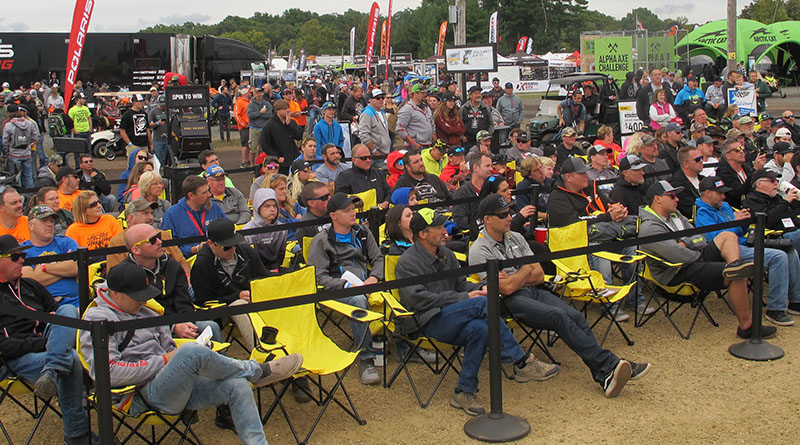After cranking away on Snow Goer since June, doing some super-tuning on one of my John Deere Trailfires over the course of this summer, hanging out at a vintage grass drag race a few Friday nights ago and getting dusted at Haydays this past weekend, I’m going to take a brief retreat from all things snowmobiles and head to Wyoming for some off-road riding. I took a snowmobile trip to the Big Horn Mountains a couple years ago with my good friend, Jeff Ward, and I’m lucky to be heading out there again this week with him — along with a few other people — to see the Bighorn National Forest from behind the wheel of a Polaris RZR sport side-by-side.

The Bighorn Mountains are located in north-central Wyoming, half-way between Mount Rushmore and Yellowstone National Park. When I played in the Bighorn National Forest in 2009, it was covered in snow, but from what I’ve read there are lush grasslands, alpine meadows and crystal-clear lakes among the valleys, rolling hills and mountain walls of this sister range of the Rocky Mountains. I’m sure scenery will be spectacular during this early autumn adventure.
I’ve been poking around on the Internet over the past few days to find information about trails, permits and restrictions in the area. The United States Department of Agriculture’s Forest Service branch has a cool Motor Vehicle Use Map available that shows a ton of trails within the Bighorn National Forest, but I’ve charged myself to put in a solid effort to learn how to use a GPS device. I’ve messed around with them in the past, but while recently writing a short story about GPS navigators for the Backcountry section of an upcoming issue of Snow Goer I learned some great tips from an expert and I’m excited to give this cool technology a college try while I’m in Wyoming. I’m going to use a Lowrance Endura Sierra that, according to the box, is “fully loaded” with maps, roads and points of interest. Wish me luck!
Another one of my goals is to cook lunch over a trailside campfire. I did this for the first time while

snowmobiling last winter and it goes down as one of the season’s highlights for me; we did it the old fashioned way without using an accelerant, just matches and dry leaves. Starting last winter’s fire proved to be a real challenge to get started because our “fuel” was covered in snow, so starting a fire during this trip should be a lot simpler if it doesn’t rain or snow.
— Andy Swanson, Snow Goer magazine managing editor
Facts about the Bighorn National Forest:
It covers 1,115,073 acres
Elevations range from 5,500 to 13,175 feet above sea level
The forest is 80 miles long and 30 miles wide
Lodgepole Pine is the most common tree
There are 387 miles of snowmobile trails within the forest
* USDA website—Bighorn National Forest page








Hi Andy:
read your story about spending some time in the Big Horns recently. My husband and I are the resident managers at a nice little resort in the Big Horns called Wyoming High Country. We would like to invite you up to our lodge this year to check it out and report back to your followers. We have the best riding (snowmobile or atv) in the Big Horns and unfortunately, are not very well known, yet, but would like to change that!
Come check us out, and thanks for telling everyone about the great trip you had on your visit.
Beth Jones